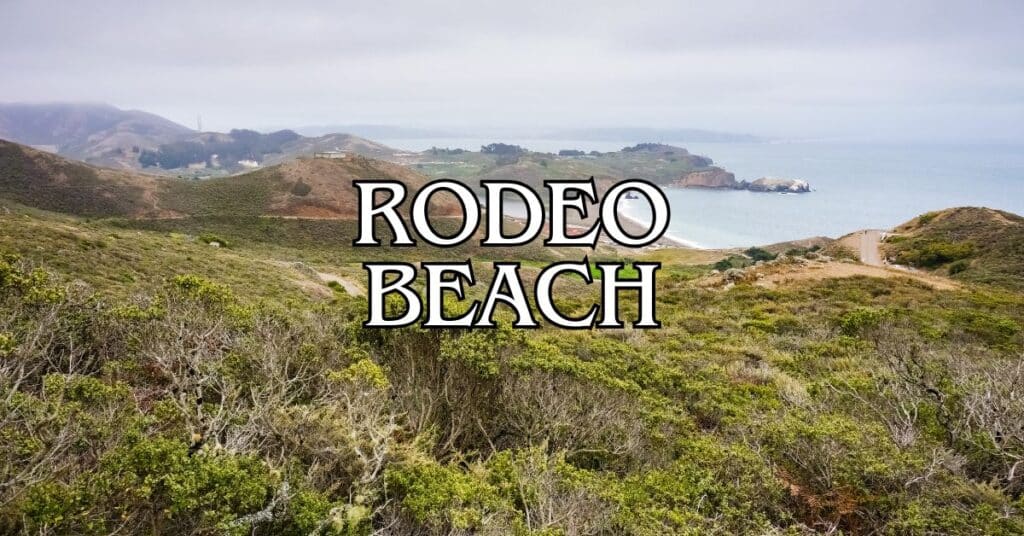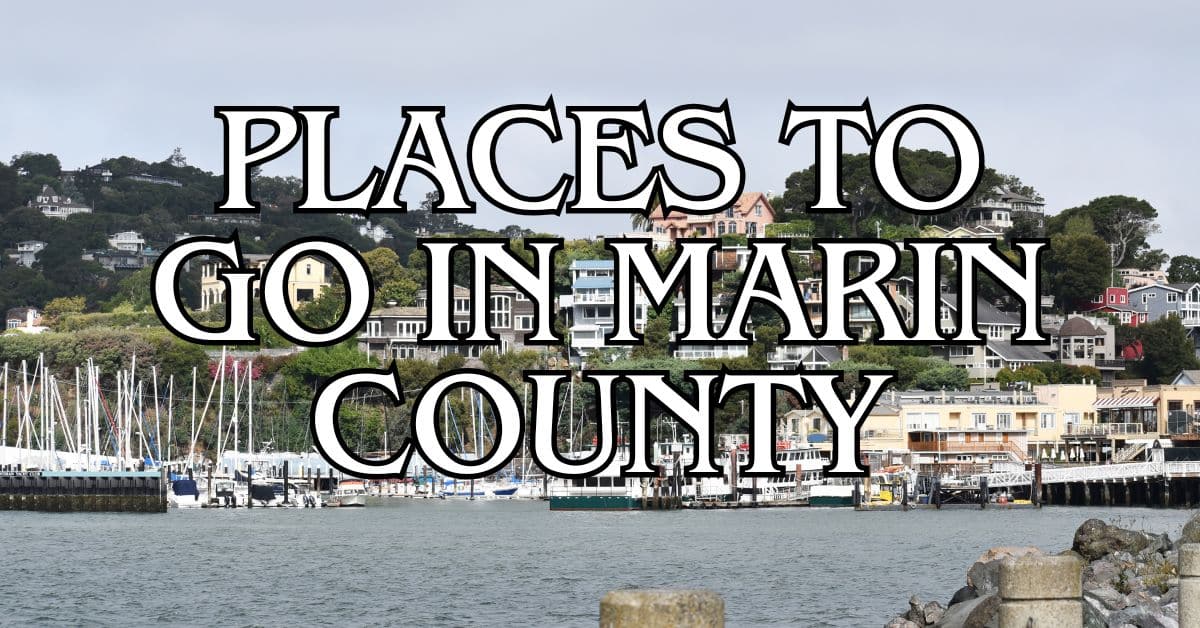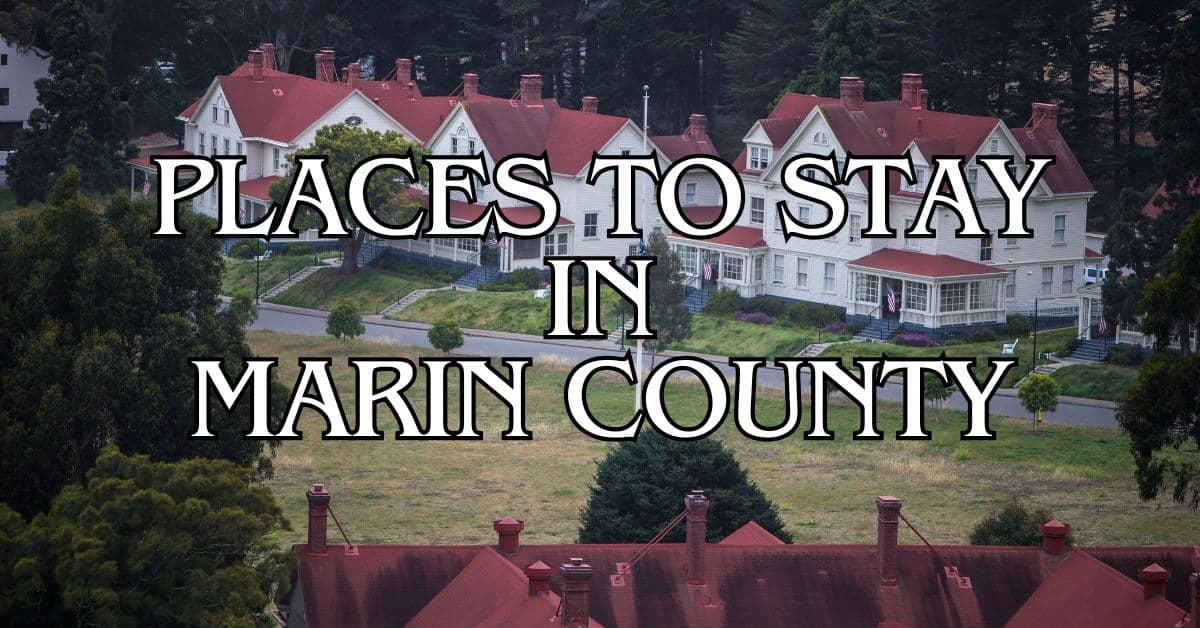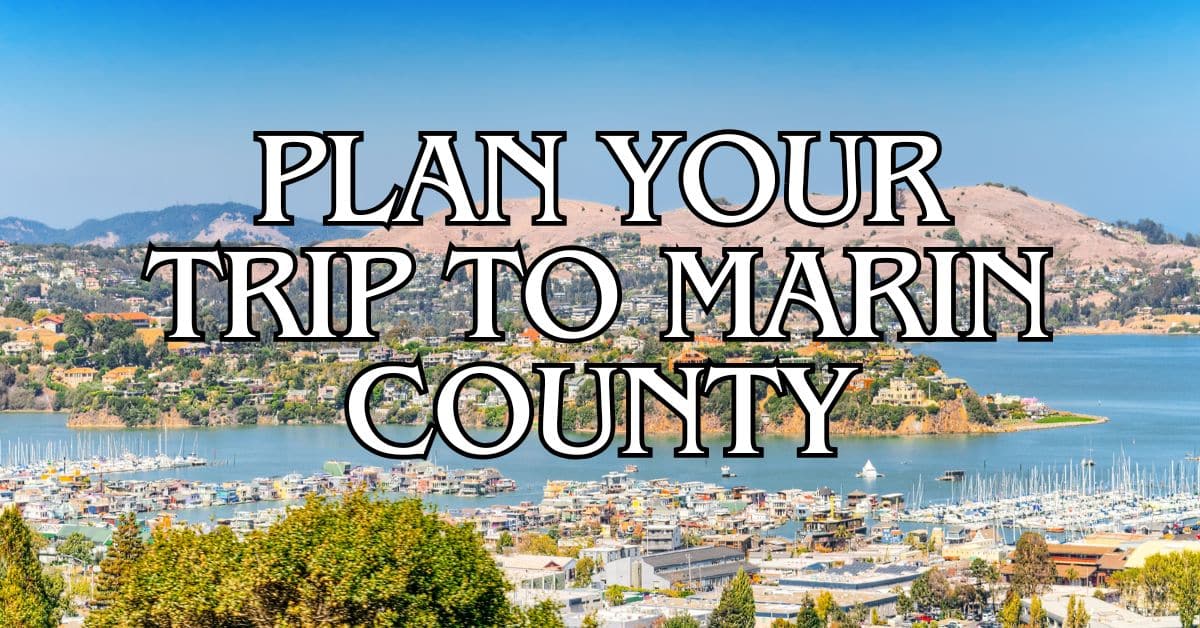Just three miles from the Golden Gate Bridge sits Rodeo Beach, one of Marin County’s most distinctive coastal gems. This windswept stretch isn’t your typical sandy shore—it’s covered with unique red and green pebbles that make it stand out among Northern California beaches. Rodeo Beach offers a perfect blend of relaxation and adventure, whether you want to beachcomb, surf, swim, or hike the coastal bluffs and lagoon.
Right in the Marin Headlands, Rodeo Beach belongs to the Golden Gate National Recreation Area and is managed by the National Park Service. The views here are wild and dramatic—Pacific coastline at its most untamed. You can watch surfers braving the waves or wander around checking out the geology that makes this spot so unusual.
Discover hand-picked hotels and vacation homes tailored for every traveler. Skip booking fees and secure your dream stay today with real-time availability!
Browse Accommodations Now
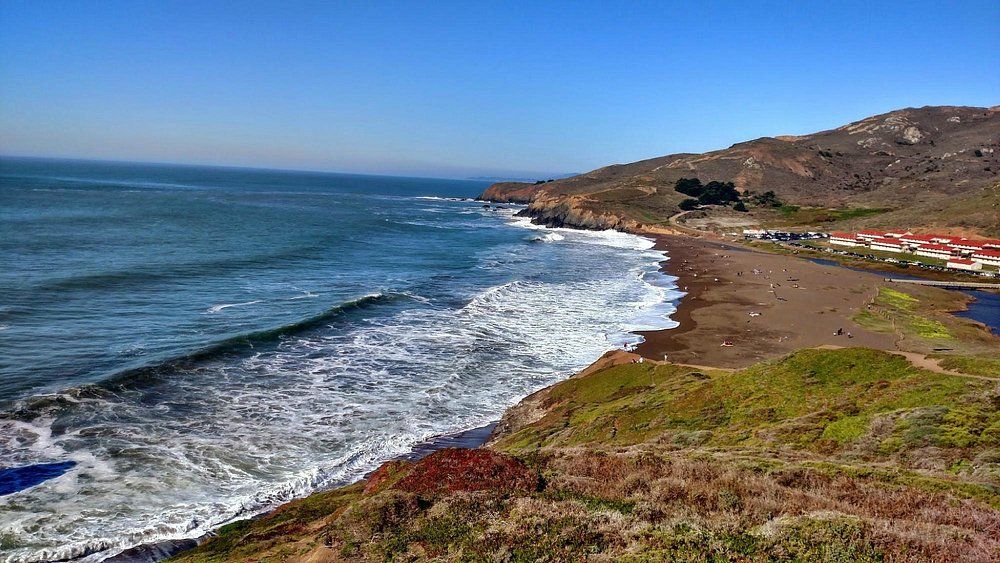
Rodeo Beach sits between Fort Cronkhite and the rugged Marin Headlands. Locals and visitors both love it for the scenery and outdoor options. Maybe you’re squeezing it in after a Golden Gate Bridge stop, or maybe you’re spending a whole day—either way, it’s a refreshing escape from city life.
Getting to Rodeo Beach
Rodeo Beach lies in the Marin Headlands, just a couple miles north of the Golden Gate Bridge. Getting there takes a bit of planning, but the drive gives you amazing views of the Bay and hills.
Directions and Parking
If you’re coming from San Francisco, cross the Golden Gate Bridge and take the Alexander Avenue exit. Turn left on Bunker Road and follow it until you hit the beach. Coming from Marin? Same idea—Highway 101 to Alexander Avenue, then follow Bunker Road.
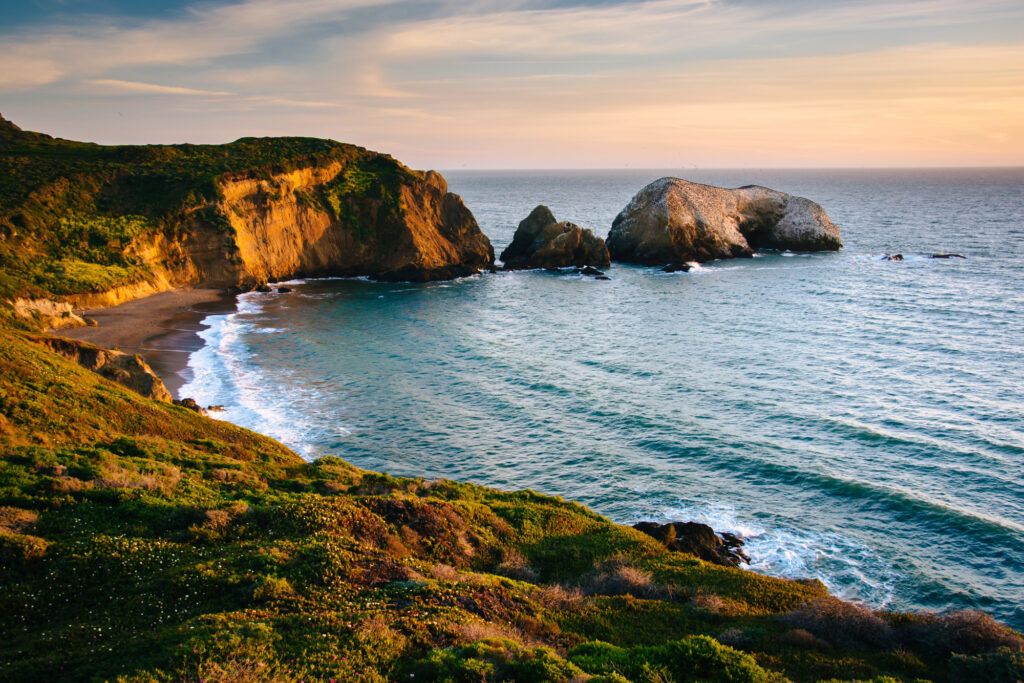
There’s free parking in a few lots close to the sand. The main lot sits at the end of Mitchell Road, basically right on the beach. On weekends and holidays, these lots fill up fast, so early arrival is your friend.
Heads up: the Baker-Barry Tunnel on Bunker Road only allows one-way traffic at a time. Traffic lights on each end control the flow, and you might end up waiting a few minutes, especially when it’s busy.
Public Transportation Options
Public transit to Rodeo Beach exists, but it’s not super frequent. Marin Transit’s Route 61 hits the Marin Headlands on weekends and holidays, leaving from Sausalito and stopping near the beach.
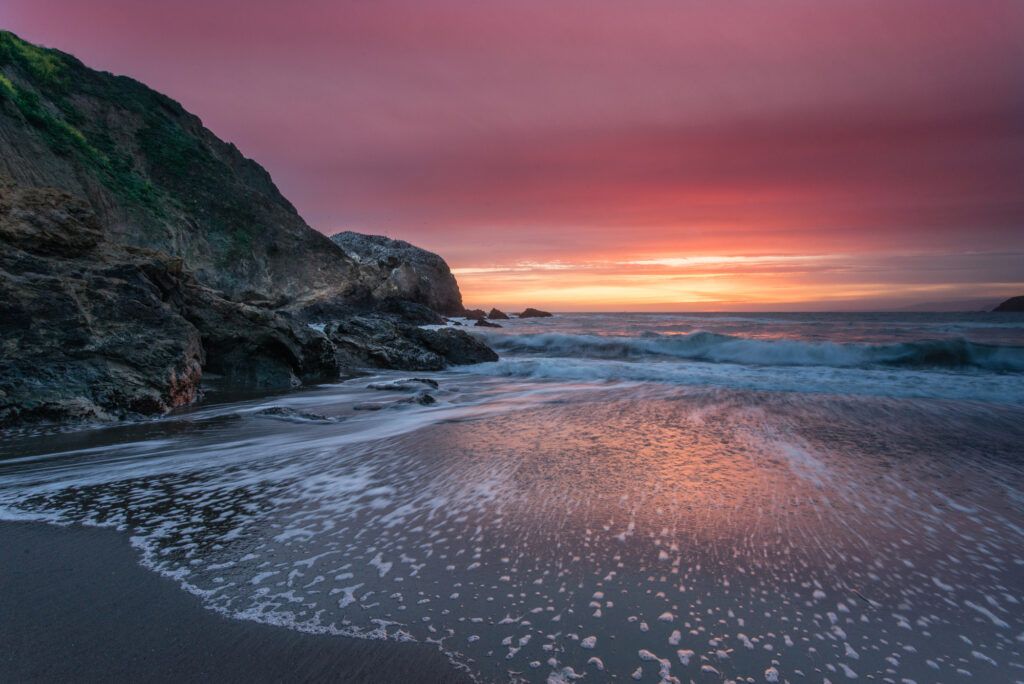
You could also take a Golden Gate Transit bus to Sausalito, then either hop on Route 61 or rent a bike for the rest of the trip.
Uber and Lyft will get you to Rodeo Beach, but getting a ride back can be tricky—cell service is spotty, so don’t count on it working every time.
Nearby Roads and Access Points
Several roads snake their way to Rodeo Beach. Conzelman Road is especially scenic, with sweeping views of the bridge and city. It connects to McCullough Road, which drops down to Bunker Road.

Hikers can reach Rodeo Beach via trails in the Headlands. The Coastal Trail comes from Point Bonita Lighthouse, while the Miwok Trail connects from Tennessee Valley.
Cyclists love these roads, too—Conzelman Road is a favorite, though it’s steep and not for the faint of heart. You can grab maps at the Marin Headlands Visitor Center to help plan your ride or hike.
Overview of Rodeo Beach
Rodeo Beach is one of Marin County’s most distinctive coastal spots, famous for its geology, wild setting, and military history.
Location and Geography
The beach sits in the Marin Headlands, part of the Golden Gate National Recreation Area, just north of San Francisco. Cliffs surround the beach, offering a bit of shelter from the wind, and it’s tucked at the west end of Bunker Road in the Fort Cronkhite area.
A standout feature is Rodeo Lagoon, which borders the beach and forms an interesting ecological transition zone. The lagoon separates the beach from the parking and picnic areas.
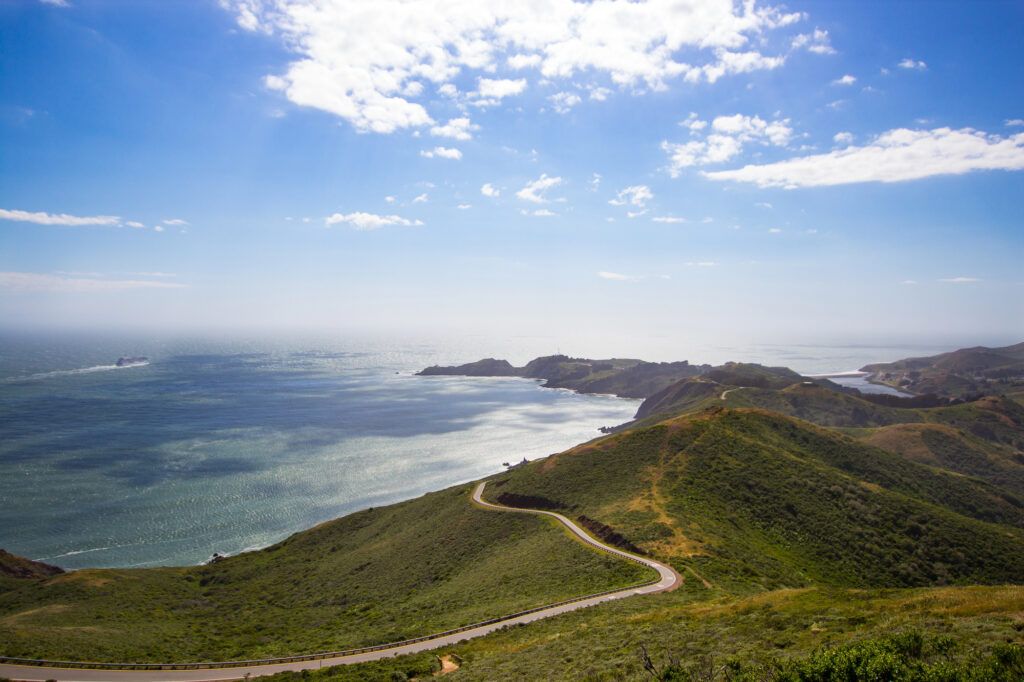
To get here, you’ll wind through the Marin Headlands’ twisty roads, often catching glimpses of the Golden Gate Bridge and the city skyline if the fog cooperates.
Even though it’s close to San Francisco, the place feels remote and wild. The beach is at sea level, but the hills around it climb hundreds of feet.
Unique Pebble Beach Features
Unlike most area beaches, Rodeo Beach isn’t sandy—it’s all about the smooth, colorful pebbles. You’ll find jasper, carnelian, and jade underfoot, which crunch as you walk.
The beach runs about half a mile, with the Pacific sending in some serious waves. Surfers love it, but swimming can be risky. Rip currents and big surf mean it’s safer to admire the water from the shore.
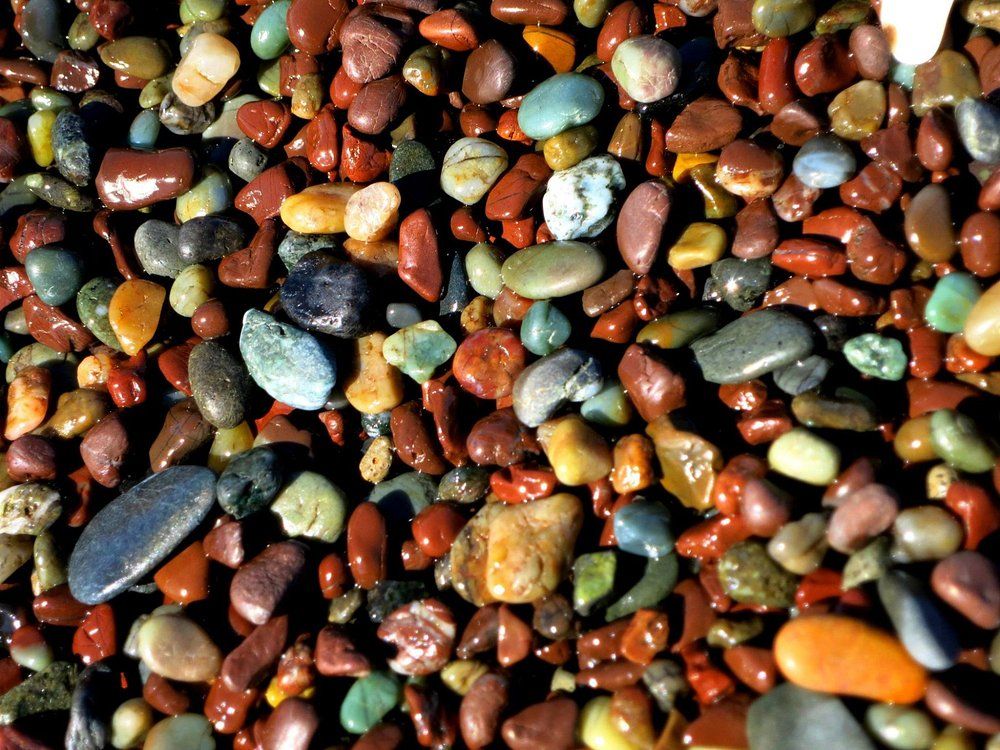
Birders flock here, too. The mix of beach, lagoon, and headlands attracts all kinds of birds throughout the year.
The wind is no joke—great for flying kites. On weekends, you’ll see plenty of them dancing above the beach.
History and Background
Rodeo Beach has deep military roots as part of Fort Cronkhite, a former Army post built in the 1930s to defend San Francisco Bay during World War II.
Old bunkers, batteries, and other relics still dot the hills. Battery Townsley, perched above the beach, once held massive guns capable of firing huge shells miles out to sea.

After the war, the area shifted from military use to recreation. In 1972, it became part of the Golden Gate National Recreation Area, protecting both its wildness and history.
These days, some of the old military buildings house the Marine Mammal Center and other environmental groups. They work to protect the unique ecosystem and teach visitors about local wildlife.
Recreation Activities
Rodeo Beach packs in outdoor fun year-round. Its spot in the Golden Gate National Recreation Area makes it a go-to for water and land adventures.
Find the perfect hotel or vacation rental. Instant booking, no fees!
View Top Stays
Surfing and Water Sports
Surfers know Rodeo Beach for its reliable waves. The beach break works best in fall and winter when northwest swells hit. Intermediate and advanced surfers get the most out of it. Beginners should be cautious—currents can be strong.
Windsurfing and kiteboarding are also big here when the wind picks up, especially in summer afternoons.
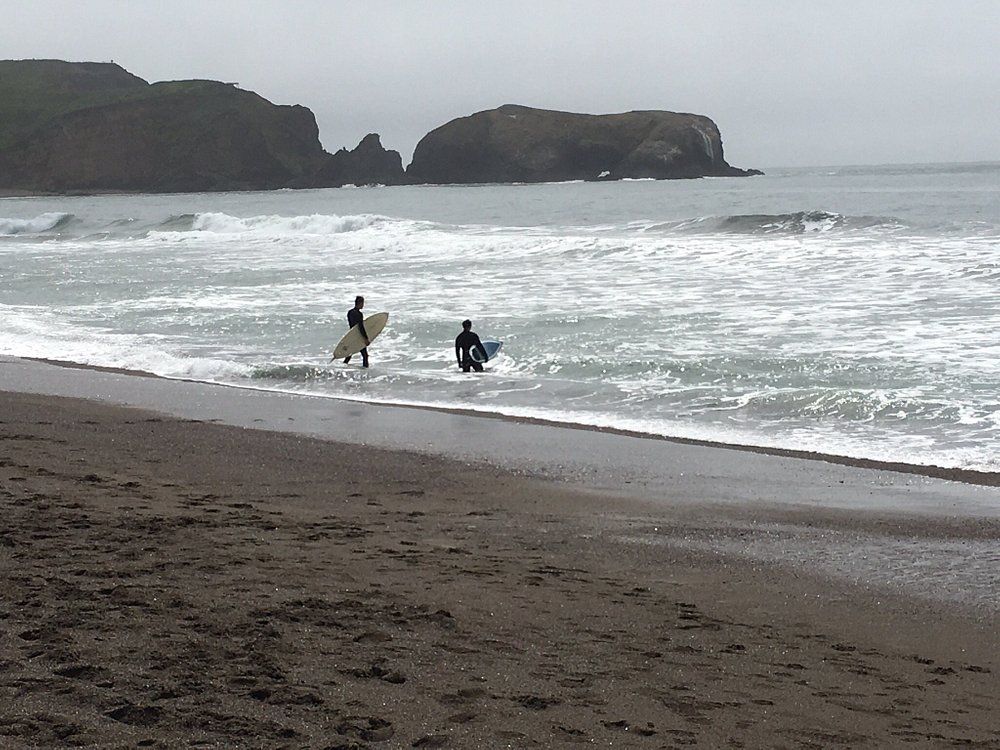
You’ll need to bring your own gear—no rentals on site. Surf schools in Sausalito offer lessons if you want to up your game.
Water is always chilly (50-60°F), so bring a full wetsuit, no matter the season.
Swimming Safety
Swimming here isn’t for the faint of heart. The water stays cold, rarely topping 60°F, and rip currents plus big waves can make it dangerous.
No lifeguards patrol the beach, so you have to judge conditions for yourself.
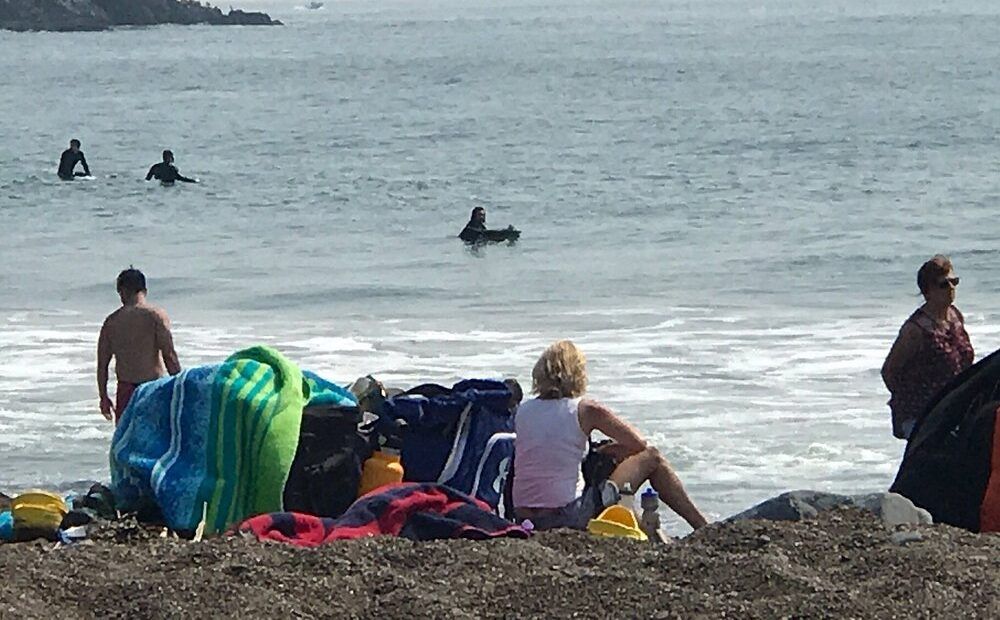
If you do go in, stick close to shore and never swim alone. The south end usually has smaller waves and is a bit safer for wading.
Keep a close eye on kids near the water. Rodeo Lagoon is calmer but not really for swimming—water quality can be iffy.
Always check for local advisories before planning water activities.
Running and Beach Walks
The pebbly surface is surprisingly good for running and walking. There’s a flat, 1-mile stretch along the ocean—great for a stroll or jog with a view. Want more? You can hook up with the Coastal Trail for extra mileage and some hills.
Mornings are your best bet for fewer crowds and lighter winds. As you walk, keep an eye out for the colorful pebbles—finding an orange carnelian is a little thrill.
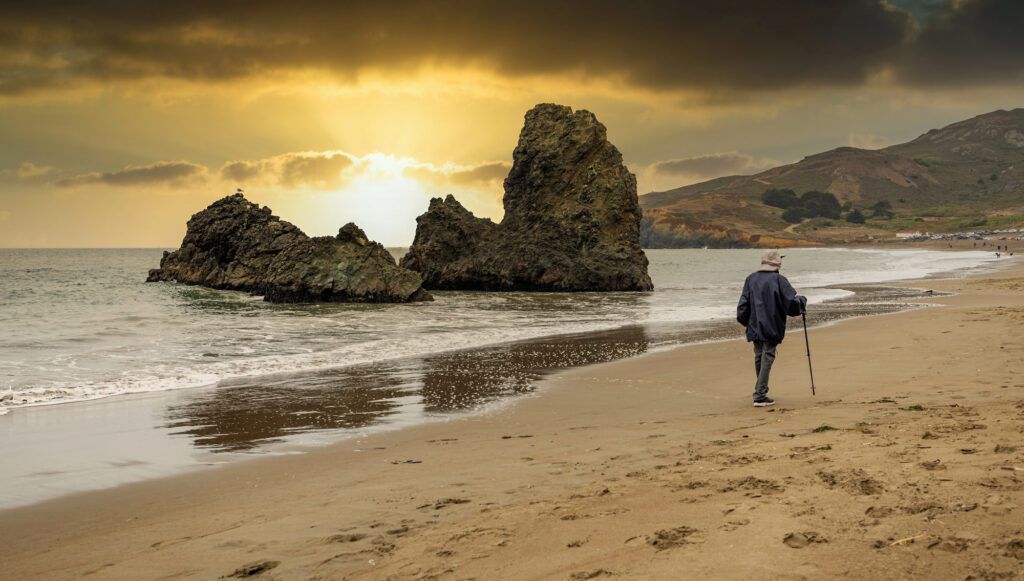
Dog owners, you’re in luck: Rodeo Beach is dog-friendly. Dogs can run off-leash under voice control, and you’ll see plenty of happy pups.
The beach links to several Marin Headlands trails, including:
- Coastal Trail (moderate)
- Miwok Trail (steep hills)
- Rodeo Lagoon Trail (easy, flat loop)
Wear sturdy shoes—the pebbles aren’t kind to bare feet or flimsy sandals.
Hiking Near Rodeo Beach
You’ve got easy access to hiking trails with Pacific views and Headlands scenery. Trails range from mellow walks to tough climbs.
Popular Trails
The Coastal Trail is a favorite, running along the bluffs above the ocean. You can do a quick out-and-back or combine segments for a longer hike.
The Miwok Trail connects with the Coastal Trail, giving you options for loops. Want a challenge? Head up to Hill 88 for sweeping views and a bit of history at the old military site.
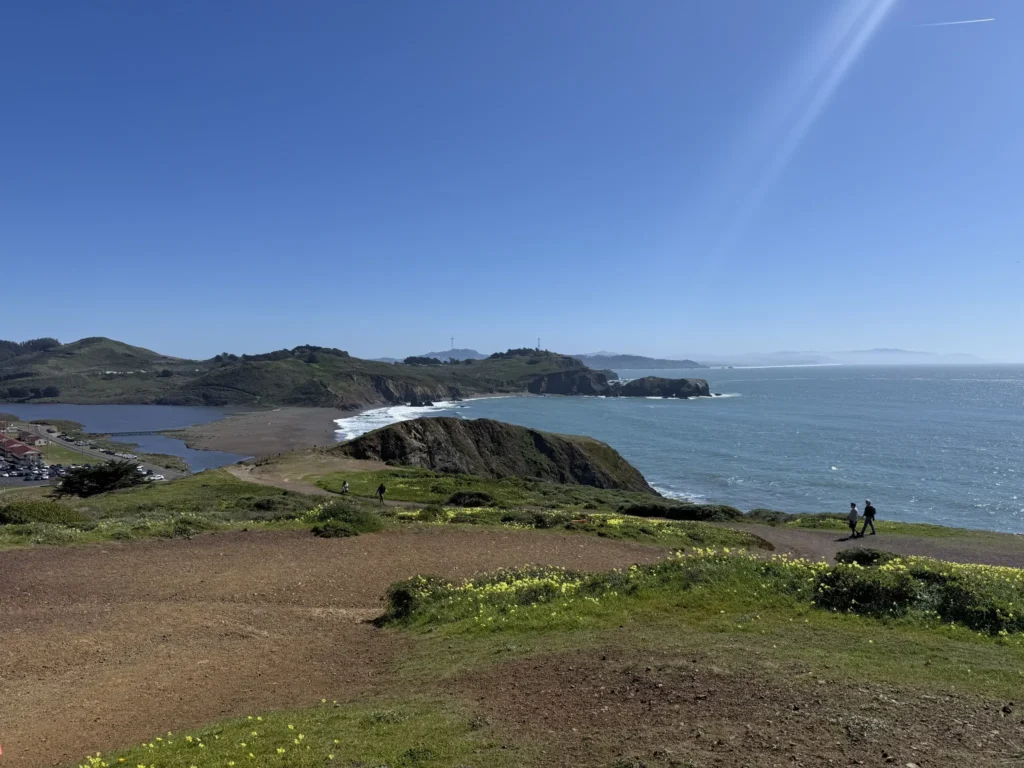
Bobcat Trail is another good route, and you can link it with others. If you’re up for a longer trek, try hiking north to Tennessee Beach—fewer crowds, just as beautiful.
Trailheads and Access
The main trailhead sits in the parking lot near the beach. Signs point you to the Coastal and Miwok Trails, so you can start a few different hikes right from there.
Trails are open year-round. Spring brings wildflowers, while fall usually means clear skies. Parking fills up quickly on weekends—arrive early or pick a weekday if you can.
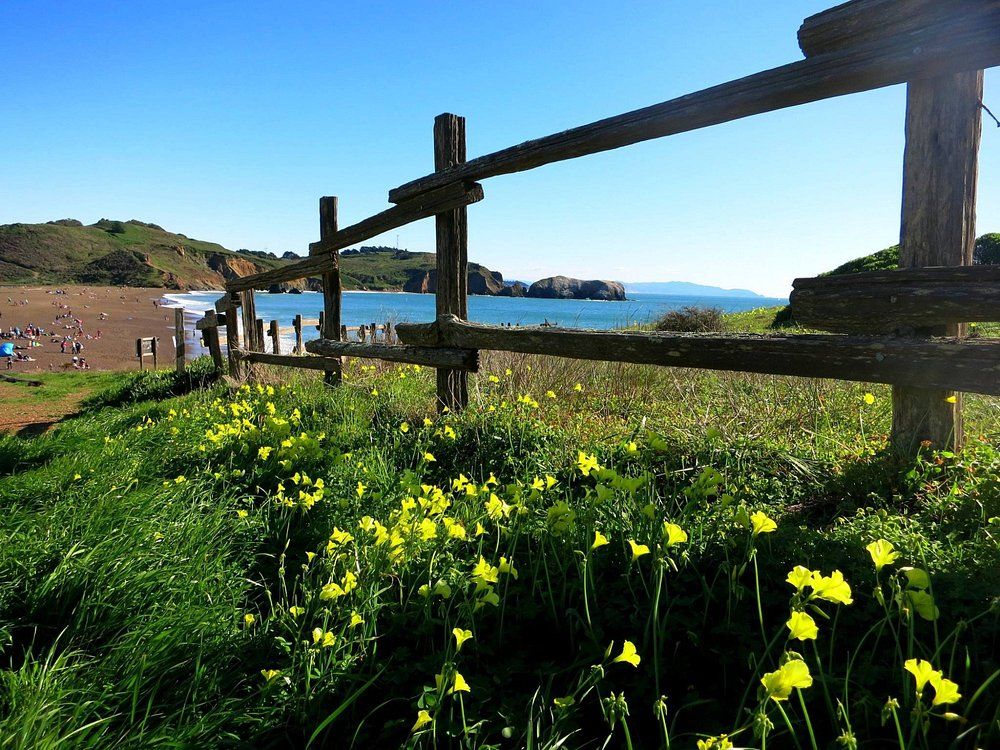
Trail maps are at the visitor center. Most trails are marked, but a map helps, especially if you’re combining routes.
Bring water and snacks—there are no services once you’re out on the trails.
Nature and Wildlife
Rodeo Beach sits in a protected spot where land and sea meet, creating a rich habitat for wildlife and plants all year.
Marine Mammals and Birdwatching
You might spot harbor seals on the rocks or sea lions in the surf. Sometimes, dolphins cruise by, especially during migration.
Bring binoculars if you like birdwatching. Shorebirds love the beach and lagoon, and brown pelicans often dive for fish just offshore. During migration seasons, birders get especially excited about what might show up.

The Marine Mammal Center nearby rescues and rehabs injured seals and sea lions. You can visit to learn about their work and sometimes see animals on the mend before they head back to the wild.
Native Plants and Ecology
The coastal bluffs around Rodeo Beach are home to native California plants tough enough to handle salty wind and sun. In spring, you’ll spot wildflower displays—yellow lupines, orange poppies, and more—dotting the hillsides.
Luxury stays to cozy cottages await, all with instant booking. Find the best deals!
Browse Marin Stays
Keep an eye out for poison oak along the trails. The old saying goes, “leaves of three, let it be.” It’s a nuisance if you brush against it, but honestly, it does have its place in the ecosystem.
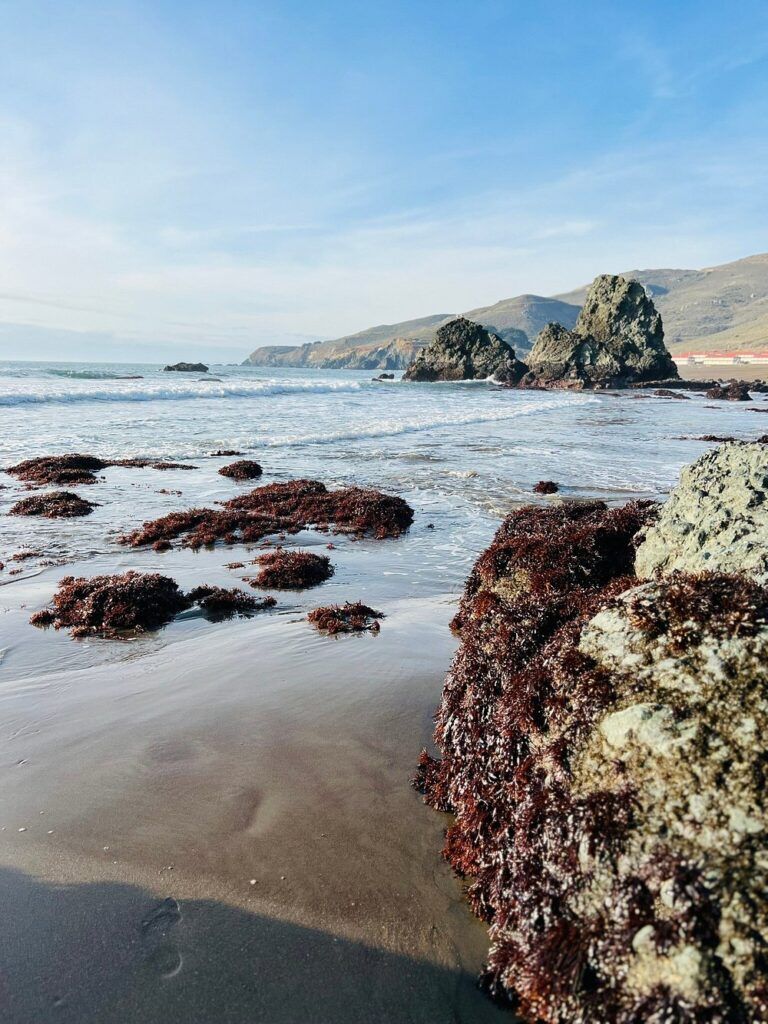
Rodeo Beach’s pebbles—those odd reds and greens—come from radiolarian chert. Basically, they’re ancient, formed from tiny marine creatures millions of years ago. It’s wild to think about the history under your feet.
Pickleweed and other salt-loving plants thrive near the lagoon, right where fresh and saltwater meet. This in-between zone supports a surprising variety of plants and animals, all kind of tangled together in a way that just works.
Historic and Cultural Sites
The area surrounding Rodeo Beach is packed with military history from the 20th century. These historic sites let you peek into America’s coastal defense past and see how the region changed over time.
Fort Cronkhite
Fort Cronkhite sits right next to Rodeo Beach, its World War II barracks still standing. Built in 1941, this old army post gives you a real sense of what life was like for soldiers stationed here back in the day. The simple, white-painted wooden buildings are a little stark against the wild scenery.
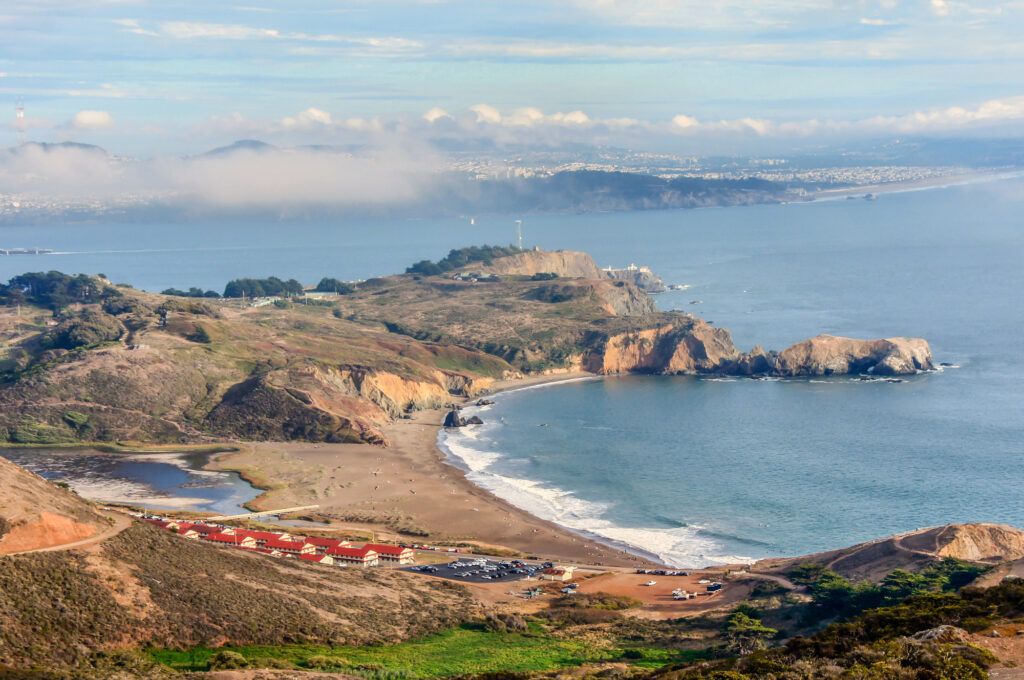
These days, the National Park Service keeps the buildings up. You can walk among the barracks, maybe picture soldiers getting ready for the unknown. Some of the buildings now serve as park offices, visitor centers, or even the Marine Mammal Center.
You can easily wander from the Fort straight down to the beach—history and ocean, side by side.
Battery Townsley and Military History
Hidden in the hills above Rodeo Beach, Battery Townsley once held giant 16-inch guns—imagine shells weighing over a ton, fired 25 miles out to sea. Built between 1938 and 1940, this concrete bunker played a big role in defending San Francisco’s harbor.
Inside, you’ll find:
- Underground ammo storage
- Power rooms
- Plotting rooms where soldiers figured out firing angles
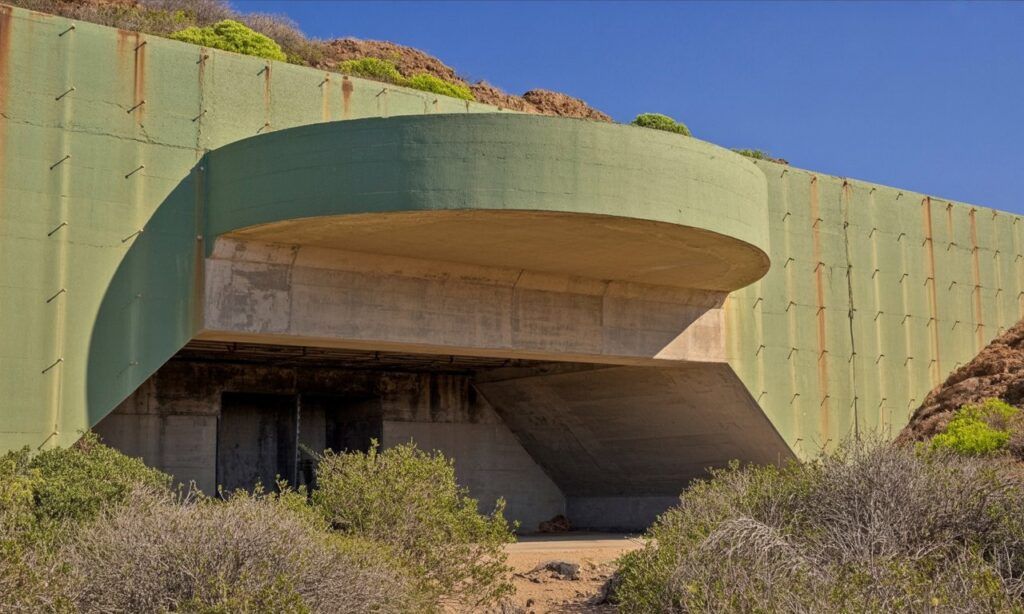
After the military decommissioned it in 1948, Battery Townsley stayed sealed for decades. Now, it’s partially restored, and you can actually tour the main gun rooms during scheduled openings (usually the first Sunday of each month).
It’s a bit of a hike—about half a mile uphill from the Rodeo Beach parking lot—but you get both a dose of history and some killer Pacific views. Not a bad payoff.
Exploring the Marin Headlands
The Marin Headlands are just minutes from San Francisco, but it feels like a whole different world out here. Rugged cliffs, old bunkers, endless ocean—if you’re in the area, you really shouldn’t skip it.
Points of Interest
Hawk Hill is probably the best viewpoint in the Headlands. You get sweeping views of the Golden Gate Bridge, the San Francisco skyline, and the Pacific. It’s a favorite for sunset chasers and anyone hoping to catch the fog rolling in.
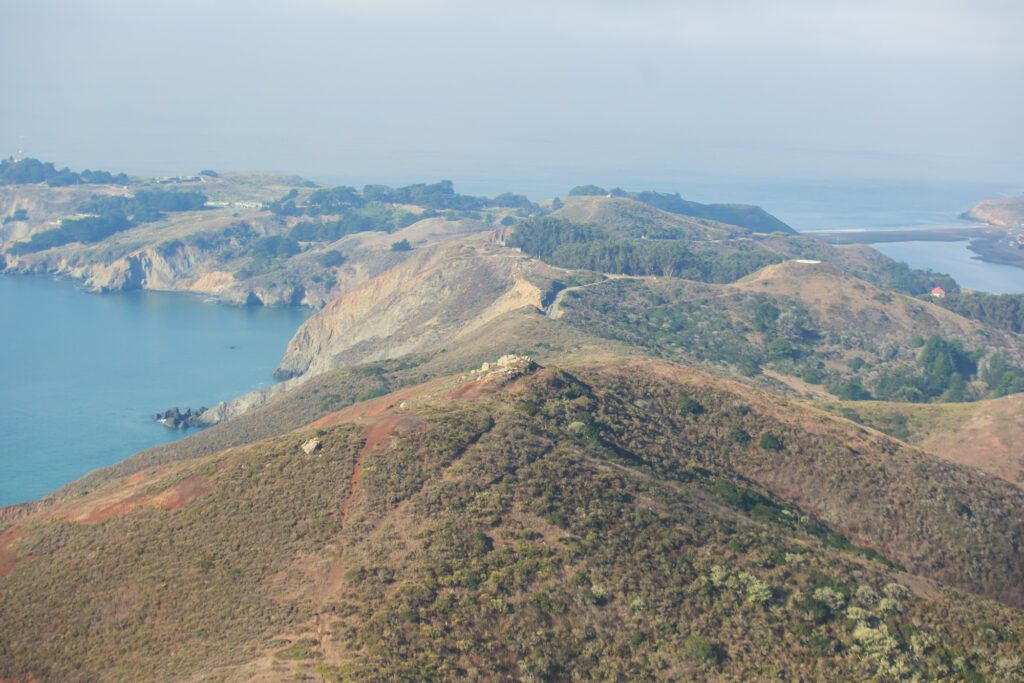
Point Bonita Lighthouse has been guiding ships since 1855. You can walk the half-mile trail out to the lighthouse, crossing a suspension bridge that’s a little nerve-wracking for some. The lighthouse is open Saturday through Monday, 12:30–3:30 PM.
Old military bunkers and batteries are scattered everywhere—reminders of when this place was all about defense during both World Wars. They’re fun to explore and double as unique vantage points.
Nearby Destinations
Sausalito is just a quick drive from the Headlands. It’s a charming waterfront town with art galleries, quirky shops, and restaurants right on the bay. Honestly, you could spend a whole afternoon just wandering and grabbing a bite.
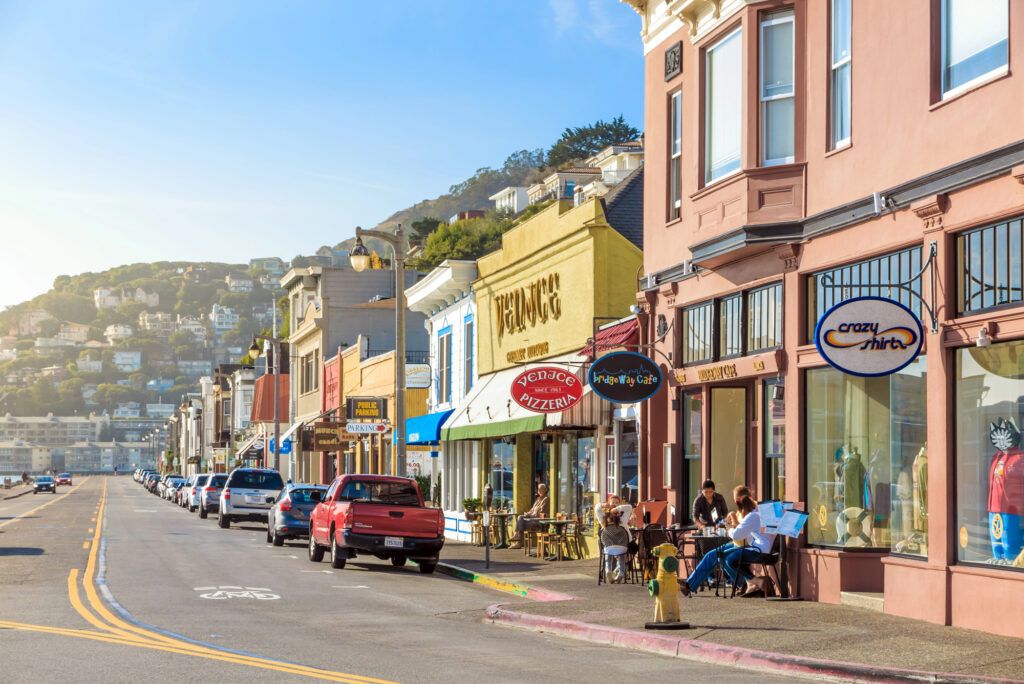
Point Reyes National Seashore is about an hour north. This stretch of protected coast covers 71,000 acres—beaches, grasslands, forests, you name it. Folks come here for lighthouse hikes, elephant seal watching at Drake’s Beach, or to spot tule elk if you’re lucky.
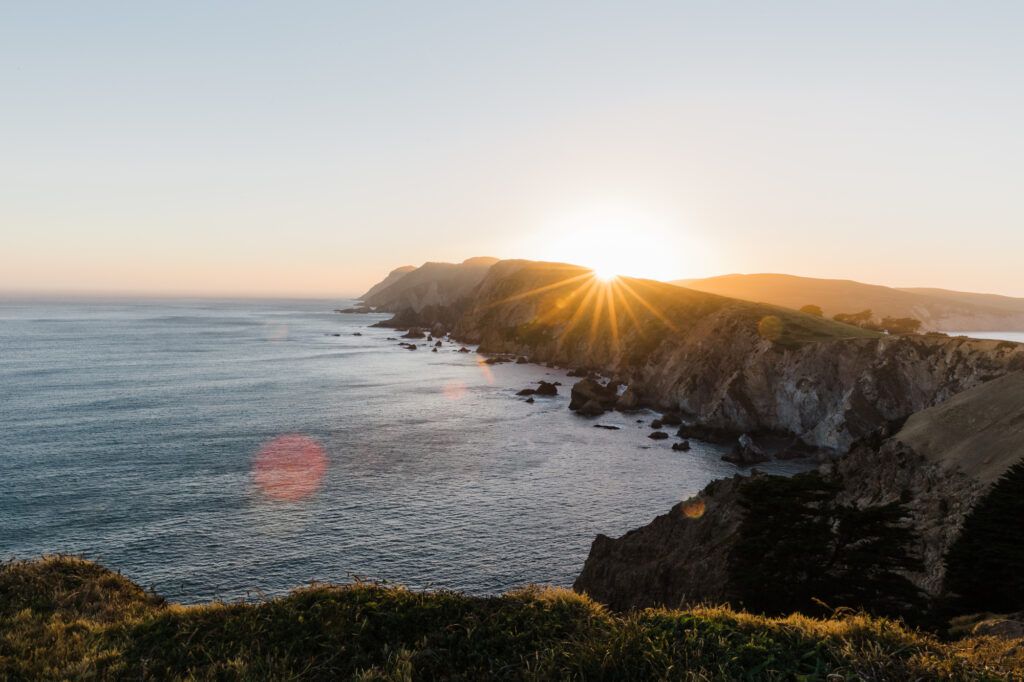
Muir Woods National Monument is only 15 minutes away and lets you walk beneath ancient redwoods. Those trees are massive. The peaceful forest vibe is a nice change from the open coast.
Click here for our park guides to:
- Muir Woods National Monument
- Point Reyes National Seashore
- Mount Tamalpais State Park
- Marin Headlands
Visitor Services and Amenities
Rodeo Beach has the basics covered. The National Park Service keeps up amenities for visitor comfort and accessibility, all while trying not to mess with the natural vibe of the place.
Marin Headlands Visitor Center
The Marin Headlands Visitor Center is your go-to spot for info on Rodeo Beach and the area. It’s close to the beach and has maps, brochures, and exhibits about local nature and military history.
Park rangers are around to answer questions or suggest trails. The center is open five days a week, but honestly, hours can change with the seasons.
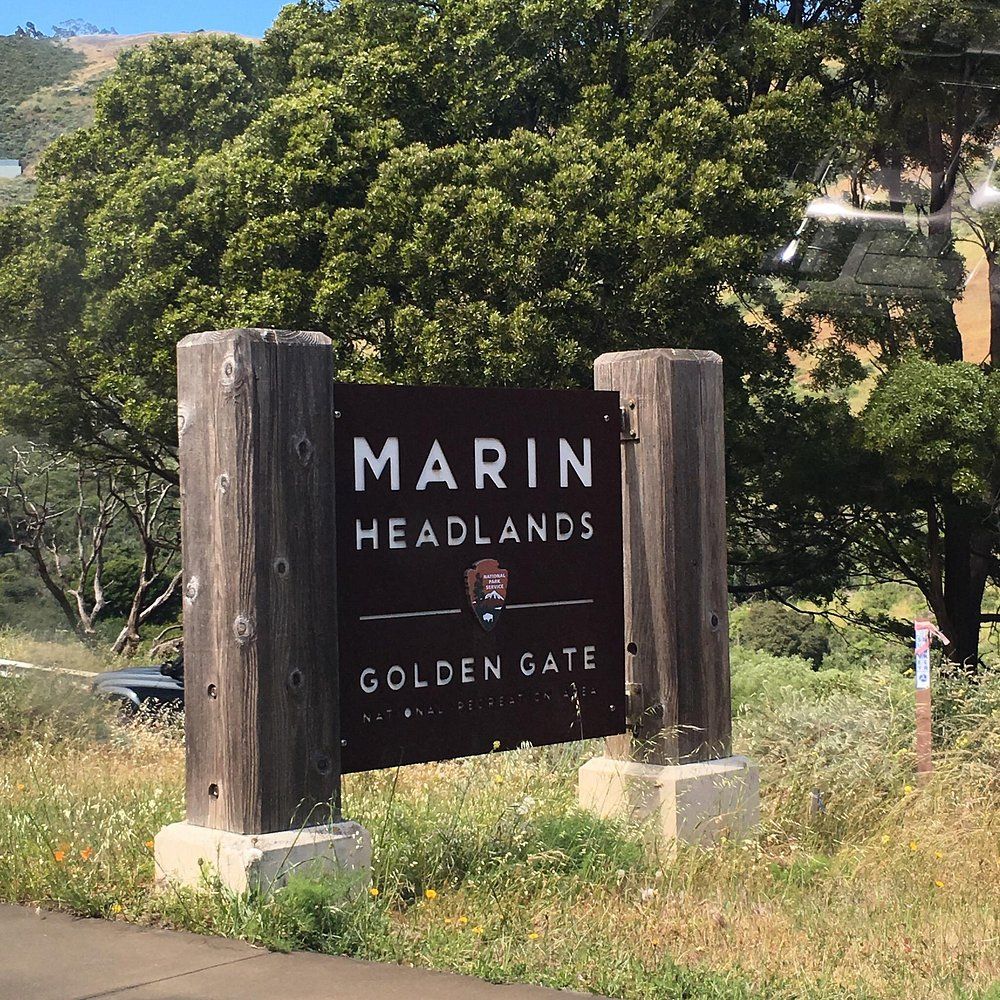
Inside, you’ll find educational displays on wildlife, geology, and the Headlands’ military past. There are books, souvenirs, and water bottles for sale too.
It’s worth stopping in before you hit the beach—check conditions, get your bearings, and maybe learn something new.
Facilities and Accessibility
Rodeo Beach has a main parking lot with easy beach access, restrooms, outdoor showers, and drinking fountains.
There are picnic tables and barbecues if you’re with a group. These are first-come, first-served, so showing up early on weekends is smart.
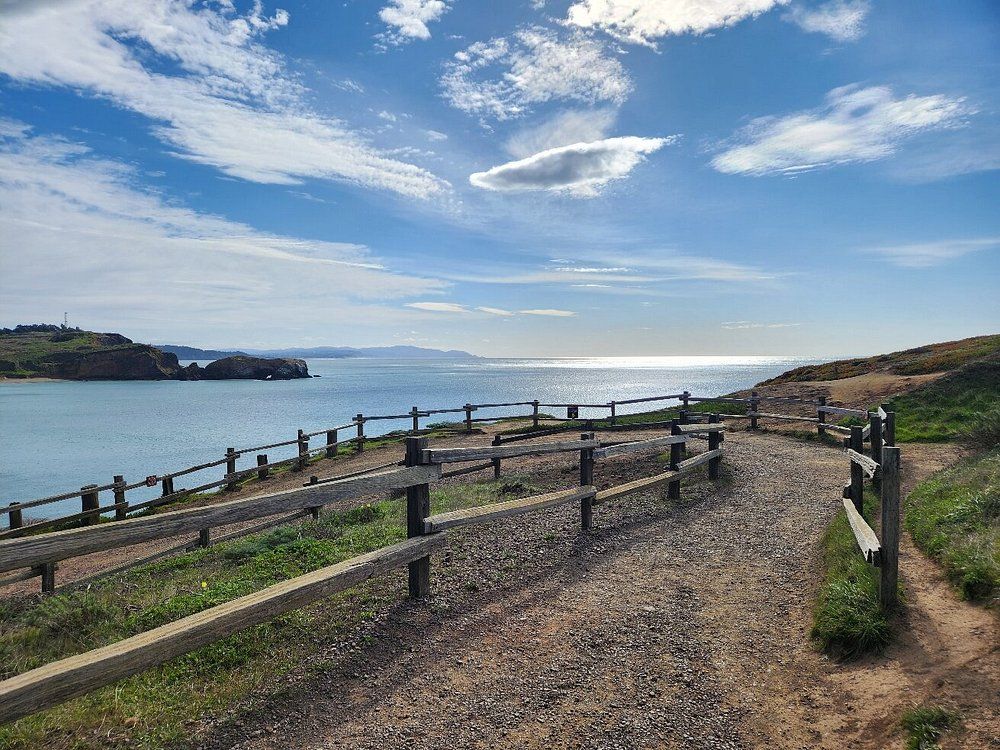
They’ve put effort into accessibility. A paved path links the parking lot to the beach, making it doable for wheelchairs and strollers. Some accessible features are in place, though the sand itself can be tricky.
Public restrooms in the lot are wheelchair accessible. If you need extra assistance, it’s a good idea to call the Golden Gate National Recreation Area office ahead of time—just to be sure you’ll have what you need.
Essential Tips for Your Visit
A little planning goes a long way at Rodeo Beach. There are a few quirks—weather, rules, even parking—that are worth knowing before you show up.
Weather and Seasonal Planning
Rodeo Beach weather is all over the place. Summers are foggy, especially in the mornings, with temps around 55–65°F. Usually, the fog burns off by afternoon. Fall (September–November) is your best bet for clear skies and warmer days, sometimes hitting 70°F.
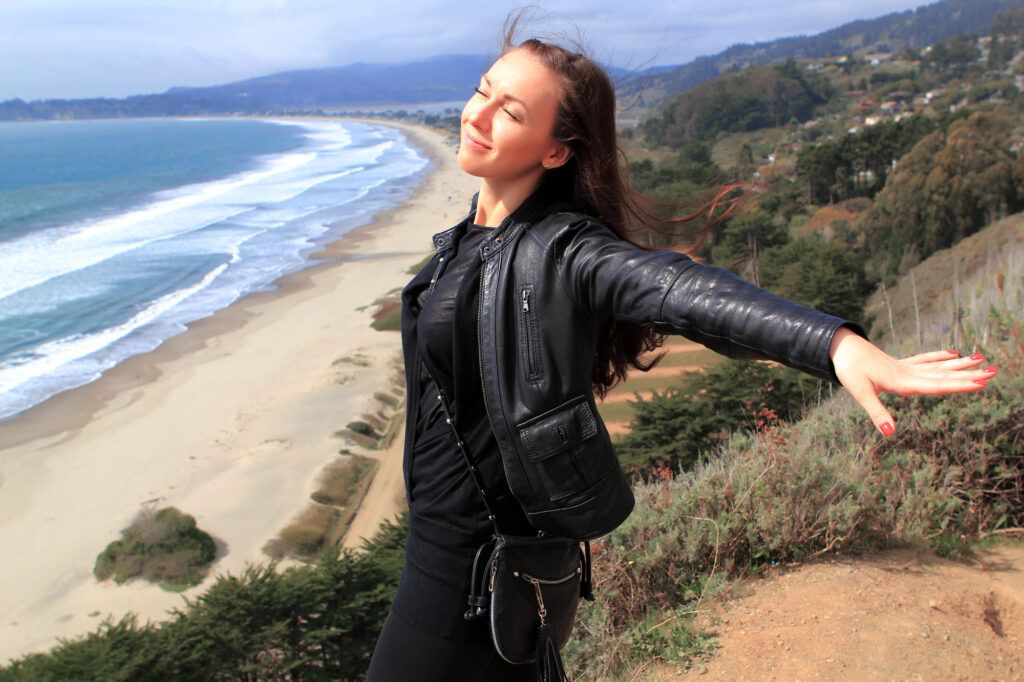
Winter can be dramatic—great for storm watching, but the surf gets dangerous. Spring brings wildflowers to the bluffs, but the wind can be relentless. Always check the forecast before heading out.
No matter the season, pack layers. Coastal wind can make it feel colder than you’d expect. A windbreaker, hat, and sunscreen are good ideas—even on cloudy days, the sun off the water can sneak up on you.
Safety and Regulations
Rodeo Beach can be a bit tricky for swimming, thanks to strong rips and unpredictable currents. No lifeguards here—you’re on your own. Over at the lagoon, swimming’s not an option at all, since it’s set aside to protect endangered species.
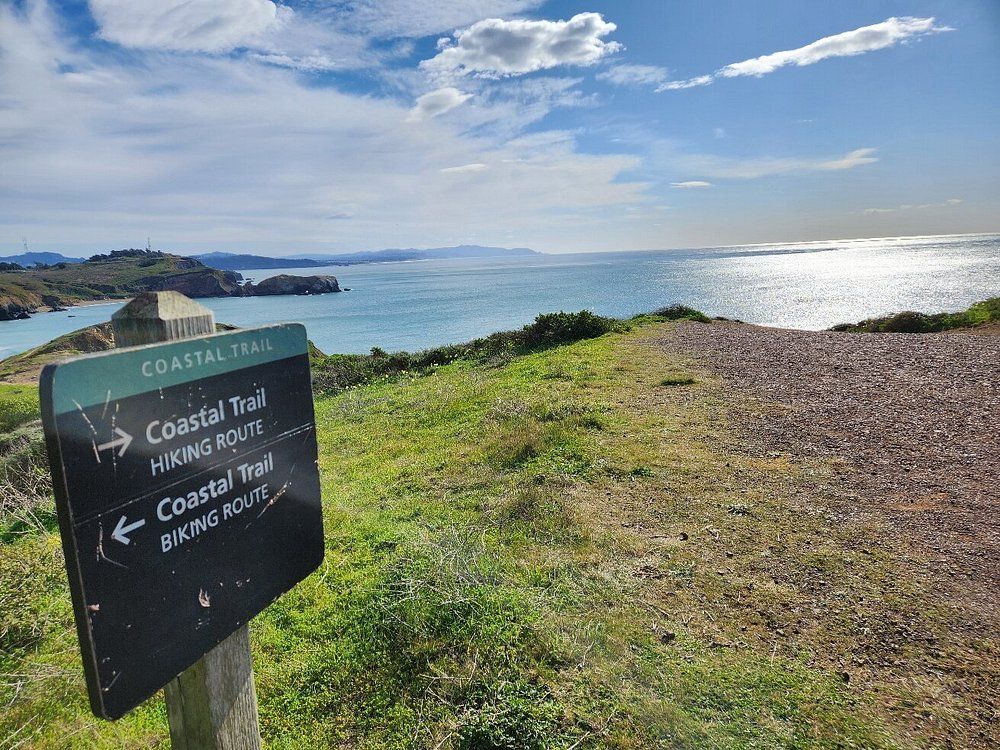
A few rules worth remembering:
- Dogs are fine off-leash, as long as they’ll listen when you call
- Fires? Only in designated fire rings
- No glass containers
- Whatever you bring in, pack it back out—trash bins are pretty limited
Poison oak pops up along the trails, with red leaves in fall and green in spring and summer. Stick to marked paths, and honestly, bringing a detailed map isn’t a bad idea since cell service drops out more often than you’d like.
Lock your car, hide anything tempting, and don’t get too comfortable—break-ins do happen in the parking lot, even though it’s federal land.
Find available hotels and vacation homes instantly. No fees, best rates guaranteed!
Check Availability Now
- Here’s our guide to hotels near Stinson Beach.
- See our article on Marin County Boutique Hotels.
- Read our articles on Marin County Budget Lodging and Marin County Motels.
- Read our articles on Marin County Hotels and Marin County Bed and Breakfasts.
- Click here to see our guide to hotels near Muir Woods.
- Click here for our article on hotels near Point Reyes.


